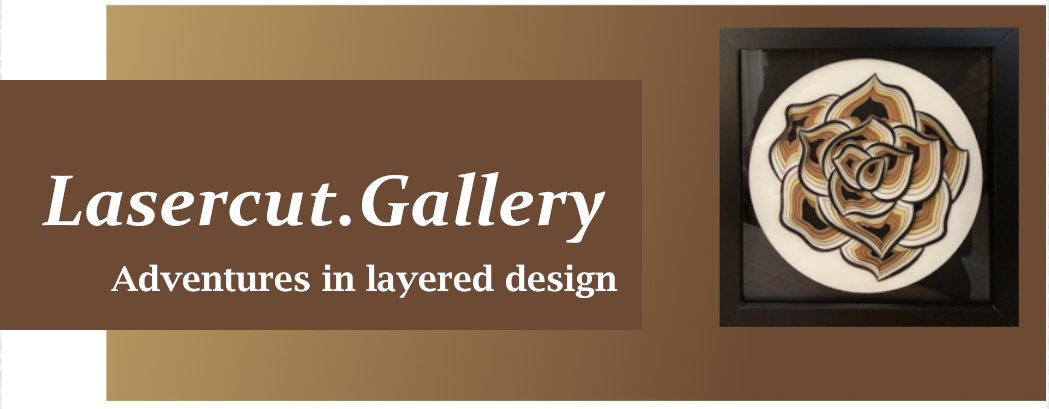 Jim Rose, a retired regional planner and computer scientist, only recently became aware of the power and beauty of the laser.
Jim Rose, a retired regional planner and computer scientist, only recently became aware of the power and beauty of the laser.
A visit to the American Craft Council exhibition in Baltimore in 2019 revealed the work of Philip Roberts, a laser craftsman working in wood. His designs were an intricate assembly of many layers of wood in “a mindful balance of design and structural integrity.”
In particular the “Spadille” spoke volumes and led me to buy the piece and study it off and on for a couple of years. A second piece “Dahlia” was added to my collection as a gift.
|
|
2. Dahlia |
Wondering how long one of his pieces took to make, and how it was done? I invite you to take a look at Philip’s short video on how he works.
Stimulated by Philip Roberts work I was surprised to find that some Howard County libraries supported a “Maker Space”, some of which contained professional laser cutters – free to use!
The best equipped studio, in my opinion, is the Carroll County Exploration Commons in Westminster downtown. There, after a short training class, access to their Epilog Fusion Pro laser cutter opened doorways that I could only dream existed. With a 36″x48″ bed this powerful professional machine was perfectly integrated with the studio’s computer network.
In addition to the access to a powerful machine, I also discovered a computer package, Inkscape, which (a) produces the required vector description of my project; (b) has the capabilities identical to Adobe Illustrator; and (c) is free. Sure there is a learning curve, but that is true of any complex software system.
Instead of using wood, most of which is fairly thick, 1/8″ or more, and somewhat expensive, I found that 4-ply matboard at 1/16″ was much less expensive and, for an 8-layer project, would fit nicely in 1/2″ deep frame.
Thus began the exciting experiments in layered designs with matboard.
Process
 Inspiration. The catalyst for designs comes in many forms, but usually using the web. Searching images for an object, a figure, a pattern often gets me started. For example there are many images of a goldfish on the web, and the one used to explain quilling on Wikipedia was, in my opinion, a winner.
Inspiration. The catalyst for designs comes in many forms, but usually using the web. Searching images for an object, a figure, a pattern often gets me started. For example there are many images of a goldfish on the web, and the one used to explain quilling on Wikipedia was, in my opinion, a winner.
Design. The challenges in experimenting with three dimensions are what drive the process. I have chosen to use a free computer design package called ‘Inkscape’. Like Adobe Illustrator, this software enables me to draw vectors and manipulate not only the position and size, but also the location and articulation of vertices.
As distinct from raster files in the form of .jpg or .gif or other formats, vector files (.svg) contain only the vertices of a design and are comparatively tiny in size. There is no problem with saving a number of intermediate steps of a design.
 One approach I have used is to imagine a set of shapes that fill the space in the overall design. Then for each closed shape the Inkscape software can calculate a smaller interior shape. And then a shape inside that one.
One approach I have used is to imagine a set of shapes that fill the space in the overall design. Then for each closed shape the Inkscape software can calculate a smaller interior shape. And then a shape inside that one.
 When all the shapes have been filled with smaller shapes, the time has come to separate the design into layers.
When all the shapes have been filled with smaller shapes, the time has come to separate the design into layers.
Each curve is assigned to one of seven different levels and each level is then separated from the design to stand on its own:

Finally each of those seven layers will be cut from mat board of different colors, and the resulting design all glued together. When set in a standard box frame the result is remarkable!



 1. Spadille
1. Spadille